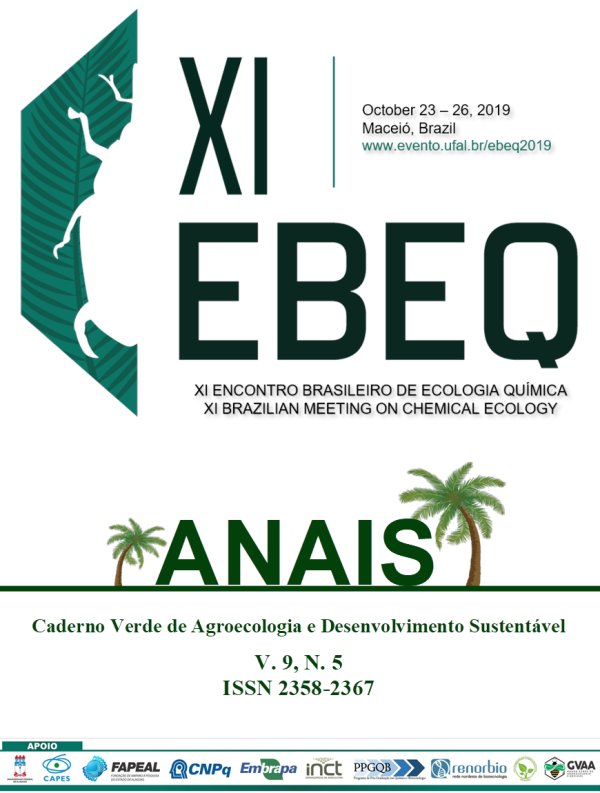EVIDENCE OF CHEMICAL COMMUNICATION IN Telchin licus (LEPIDOPTERA: CASTNIIDAE)
Palabras clave:
GIANT SUGARCANE BORER, ANTENNAE SENSILLA, TELESCOPIC OVIPOSITOR, PHEROMONE.Resumen
The giant sugarcane borer Telchin licus (Drury, 1773) (Lepidoptera: Castniidae) is a day-flying moth pest of sugarcane, pineapples and bananas. To contribute to the understanding of chemical communication in this species, we report the morphology of its olfactory system and the chemical composition. The ventral surface of the clubbed antennae of T. licus has six morphological types of sensilla: sensilla trichoidea, basiconica, chaetica, squamiform, coeloconica, and auricillica. The telescopic ovipositor shows no evidence of a sexual gland, and no female-specific compound was from it. On the other hand, the mid-leg basitarsus of males releases (E,Z)-2,13-octadecadienol and (Z,E)-2,13-octadecadienol, which are electroantennographically active in both sexes. These compounds are known female sex pheromones in the Sesiidae family and male pheromones in the Castniidae family; thus, we suggest that they serve as short-range pheromones in T. licus, although further investigations are necessary to elucidate the behavioural activity of these compounds in an ecological context.Descargas
Publicado
Cómo citar
Número
Sección
Licencia
Termo de cessão de direitos autorias
Esta é uma revista de acesso livre, em que, utiliza o termo de cessão seguindo a lei nº 9.610/1998, que altera, atualiza e consolida a legislação sobre direitos autorais no Brasil.
O(s) autor(es) doravante designado(s) CEDENTE, por meio desta, publica a OBRA no Caderno Verde de Agroecologia e Desenvolvimento Sustentável, representada pelo Grupo Verde de Agroecologia e Abelhas (GVAA), estabelecida na Rua Vicente Alves da Silva, 101, Bairro Petrópolis, Cidade de Pombal, Paraíba, Brasil. Caixa Postal 54 CEP 58840-000 doravante designada CESSIONÁRIA, nas condições descritas a seguir:
O CEDENTE declara que é (são) autor(es) e titular(es) da propriedade dos direitos autorais da OBRA submetida.
O CEDENTE declara que a OBRA não infringe direitos autorais e/ou outros direitos de propriedade de terceiros, que a divulgação de imagens (caso as mesmas existam) foi autorizada e que assume integral responsabilidade moral e/ou patrimonial, pelo seu conteúdo, perante terceiros.
O CEDENTE mantêm os direitos autorais e concedem à revista o direito de divulgação da OBRA, com o trabalho simultaneamente licenciado sob a Licença Creative Commons do tipo atribuição CC-BY.
O CEDENTE têm autorização para distribuição não-exclusiva da versão do trabalho publicada nesta revista.
O CEDENTE têm permissão e são estimulados a publicar e distribuir seu trabalho online (ex.: em repositórios institucionais ou na sua página pessoal) a qualquer ponto antes ou durante o processo editorial, já que isso pode gerar alterações produtivas, bem como aumentar o impacto e a citação do trabalho publicado.








